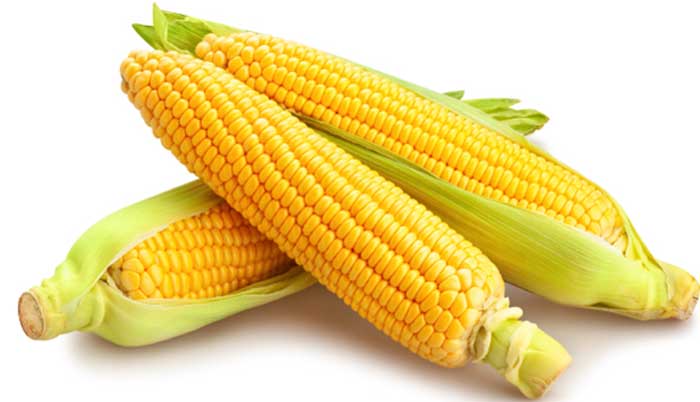![]() Home > Health
Home > Health
The Corn Conundrum: How This Staple Food Can Be Nutritious And Harmful

NEWS TARGET | NATURAL NEWS
![]() April 30th, 2025 | 10:17 AM |
April 30th, 2025 | 10:17 AM | ![]() 363 views
363 views
NATURAL NEWS
Corn originated in Mesoamerica over 9,000 years ago and became a global staple after European colonization. Today, it is the most produced grain worldwide, used in food, biofuels and industrial products.
It provides essential nutrients, including fiber, protein, vitamins (C, folate), minerals (magnesium, potassium) and antioxidants (lutein, zeaxanthin) that support immunity, digestion and eye health.
While whole corn is nutritious, processed corn products (e.g., high-fructose corn syrup) may contribute to obesity. GMO corn and pesticide residues (e.g., glyphosate, atrazine) are debated concerns, making organic or non-GMO options preferable.
Organic corn has fewer pesticides, no glyphosate and higher antioxidants. Budget-friendly alternatives like frozen or rinsed canned corn can still be nutritious.
Corn is used globally in dishes like tortillas, polenta, popcorn and elote. Healthy recipes include quinoa-corn salad and grilled corn with avocado.
Corn, also known as maize (Zea mays), is one of the most widely consumed staple foods in the world. Revered for its versatility, affordability and nutritional benefits, corn has played a crucial role in human diets for thousands of years.
Corn traces its roots back to Mesoamerica, where indigenous peoples in present-day Mexico domesticated it from a wild grass called teosinte around 9,000 years ago. Unlike its wild ancestor, which had small, sparse kernels, early farmers selectively bred corn to produce larger, more nutritious cobs.
By the time European explorers arrived in the Americas in the late 15th century, corn was already a dietary cornerstone for Native American civilizations, including the Maya, Aztec and Inca. Spanish and Portuguese colonizers introduced maize to Europe, Africa and Asia, where it quickly became a vital crop due to its adaptability and high yields.
Today, corn is the most produced grain globally, with the United States, China and Brazil leading in cultivation. Beyond food, corn is used in biofuels, animal feed and industrial products like cornstarch and high-fructose corn syrup (HFCS).
Nutritional benefits
Corn is generally considered a nutritious food when consumed in its whole form. You can eat whole corn fresh, frozen or minimally processed. A whole corn provides:
96 kcal
21 g of carbohydrates, including 2.4 g fiber
3.4 g of protein
1.5 g of fats
11 percent of the daily value (DV) for vitamin C, which supports immunity and skin health
Nine percent of the DV for magnesium, an essential nutrient for muscle and nerve function
10 percent of the DV for folate, which is crucial for DNA synthesis and pregnancy
Six percent of the DV for potassium, which helps regulate blood pressure
Antioxidants that promote eye health, like lutein and zeaxanthin
Corn also contains resistant starch, a type of fiber that feeds beneficial gut bacteria, aiding digestion and metabolic health.
Is corn healthy or harmful?
Debates about the health implications of eating corn arise due to several potential concerns.
One major issue is genetically modified (GMO) corn, which makes up over 90 percent of U.S.-produced corn and is engineered for pest resistance. While some studies claim GMO corn is safe for consumption, choosing non-GMO organic varieties is still recommended to help you avoid the health risks associated with GMO corn consumption and exposure to glyphosate, a common herbicide.
Another concern is pesticide residues, as conventionally grown corn may contain traces of chemicals like atrazine and chlorpyrifos, which have been linked to hormone disruption and neurotoxicity. Additionally, some studies have detected heavy metals such as cadmium and lead in corn, particularly in regions with high pollution levels, making organic or verified low-toxin sources a safer choice.
Processed corn products, including corn chips, high-fructose corn syrup (HFCS) and refined corn oil, are also problematic, as they lack fiber and essential nutrients and may contribute to obesity and inflammation when consumed excessively.
Organic vs. conventional corn
If you're concerned about toxins, organic whole corn is the better choice, as studies indicate it has lower pesticide residues, contains no glyphosate (a chemical commonly used on GMO crops) and boasts higher antioxidant levels compared to conventional corn. (Related: Monsanto plotting to wipe out genetic diversity of corn in Mexico with GMO corn.)
For those on a budget, frozen or canned corn (preferably BPA-free) can be a practical alternative, though rinsing may help get rid of some pesticide residues. While organic corn provides additional health benefits, these more affordable options can still be a nutritious addition to a balanced diet.
Culinary uses and recipes
Here are some popular corn-based dishes and recipe ideas you should try:
Tortillas and tamales (Mexico)
Polenta (Italy)
Cornbread (Southern U.S.)
Elote (Mexican Street Corn) – Grilled corn with chili, lime and cheese
Arepas (Venezuela/Colombia) – Cornmeal cakes
Popcorn – A whole-grain, fiber-rich snack (when air-popped)
Corn chowder – A creamy, comforting soup
Quinoa and black bean corn salad – a protein-packed, fiber-rich meal
Grilled corn with avocado and lime dressing – a refreshing summer side
Turmeric corn soup – anti-inflammatory and nourishing
This story is not medical advice and is not intended to treat or cure any disease. Always consult with a qualified naturopathic physician for personalized advice about your specific health situation or concern.
Learn more about the health benefits of superfoods like corn and other natural ingredients at NaturalNews.com, your trusted source for wellness insights and nutritional knowledge.
For a cutting-edge tool to expand your understanding of natural health, try Brighteon.ai, an innovative AI model created by Mike Adams, the Health Ranger. This free, downloadable tool is designed to decentralize knowledge, bypass censorship, and empower individuals with actionable information.
Source:
courtesy of NATURALNEWS
by Laura Harris
If you have any stories or news that you would like to share with the global online community, please feel free to share it with us by contacting us directly at [email protected]